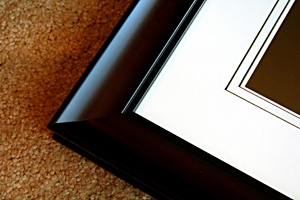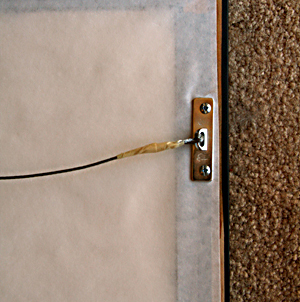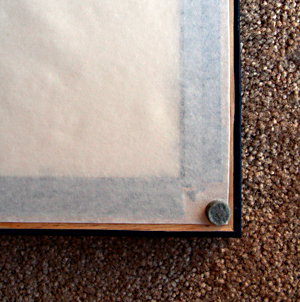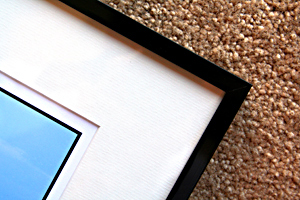<Return to home page> <Go to Gallery Index>
| Limited edition prints are available
for sale to interested collectors. All such prints will be
signed, numbered and dated and will be
sold in standard, wall display sizes of approximately
12x18,
through 20x30 inches. (Actual sizes are relative to image
proportions.) Each print will be custom made, and no two prints of the
same image will be precisely the
same. Each will be given an imperceptible, imbedded serial number
identifying the print, original purchaser, date of purchase and other
information to be included in the photographer's database. All prints
will be sold as mounted, matted, glazed and framed. No limited
edition prints will be sold unframed and unglazed. Not all images
in the galleries are available for sale. Some prints are only available in smaller sizes. |
Protecting Fine Photo Art There
are four enemies of
photographic wall art. These are light, heat, atmospheric gases,
and the chemicals contained within the printing and mounting
materials themselves. In recent years two processes have
come to dominate photo printing - inkjet and laser or "lightjet."
In both cases the pigments and papters used to make these prints
have evolved to a point where considerable longevity and
resistence to color and tonal fading are possible - well beyond the
lifetime of the original purchaser and even their heirs. However, it
should be noted that even
the best prints will not retain their color, vibrance, or their dynamic
range if they are improperly mounted and displayed.
Light is perhaps the worst enemy of photographs because of it's ability to bleach and fade an image. Glass provides some protection from both ultraviolet and infrared radiation. However, by displaying your photographic images out of direct sunlight, you can dramatically limit the effect of the sunlight's damaging rays. The rays will be bounced and diffused off of other surfaces within a room before they reach the image, and the glass covering the image will dramatically limit any residual effects of this diffused sunlight. Atmospheric gases and heat are probably the two next biggest enemies of the colors and tones in photographs. Atmospheric gases are absorbed by the fibers in photographic papers, and the chemicals in these gases, in turn, combine with the pigments in the print to inevitably change it's colors. I once saw a poster image that had been brought into a frame shop for reframing. It had some kind of transparent plastic over it's surface that had been damaged with a small hole in the center. It had hung like that for years and now had a distinctly visible yellow discoloration on the surface of the print that radiated from the hole. The print had been hung out of direct sunlight in a cool, dark room, but had been changed by the atmosphere in the room. In addition to the effect of gases, heat breaks down the molecular bonds found in pigments and can also have a deleterious effect upon colors and tones. This is why it is always best to hang important art away from heat registers, radiators and so on. As indicated above, today, the negative influence of the chemicals found in the pigments and papers has mostly been eliminated. However, prints that use poor materials for mounting and matting are still potentially subject to discoloration and fading through absorbtion of the chemicals from these materials over time. For this reason only the finest materials should be used for mounting and matting framed prints. |
| Framing of all signed and numbered prints is done by a master
framer using only museum quality materials. Matting a print not only
improves it's appearance but also creates an airspace between the
surface of the photograph and the glass in front of it. Frames are
virtually air tight, guaranteeing that the image will be isolated from
the atmosphere in any room in which it is hung. Photographs are mounted on dense foam board that
is PH neutral and chemically inert. Matt board is made of non acid,
cotton fiber materials that have virtually no chemical influence on the print.
Frames are wood or wood composition, and suspension materials are
designed to help keep the frame from contact with the wall.
Glazing is nonglare glass to limit reflections. All prints sold here are made to last a very long time. Please see frame
details below: |
 |
 |
 |
 |
| Interested collectors are
encouraged to contact the photographer at the following email address
to discuss specifics regarding the purchase of a print: Jay@CURTISPHOTOGALLERY.COM Please include the image number, it's discription and gallery in your inquiry. <Return to home page> <Go to Gallery Index> |